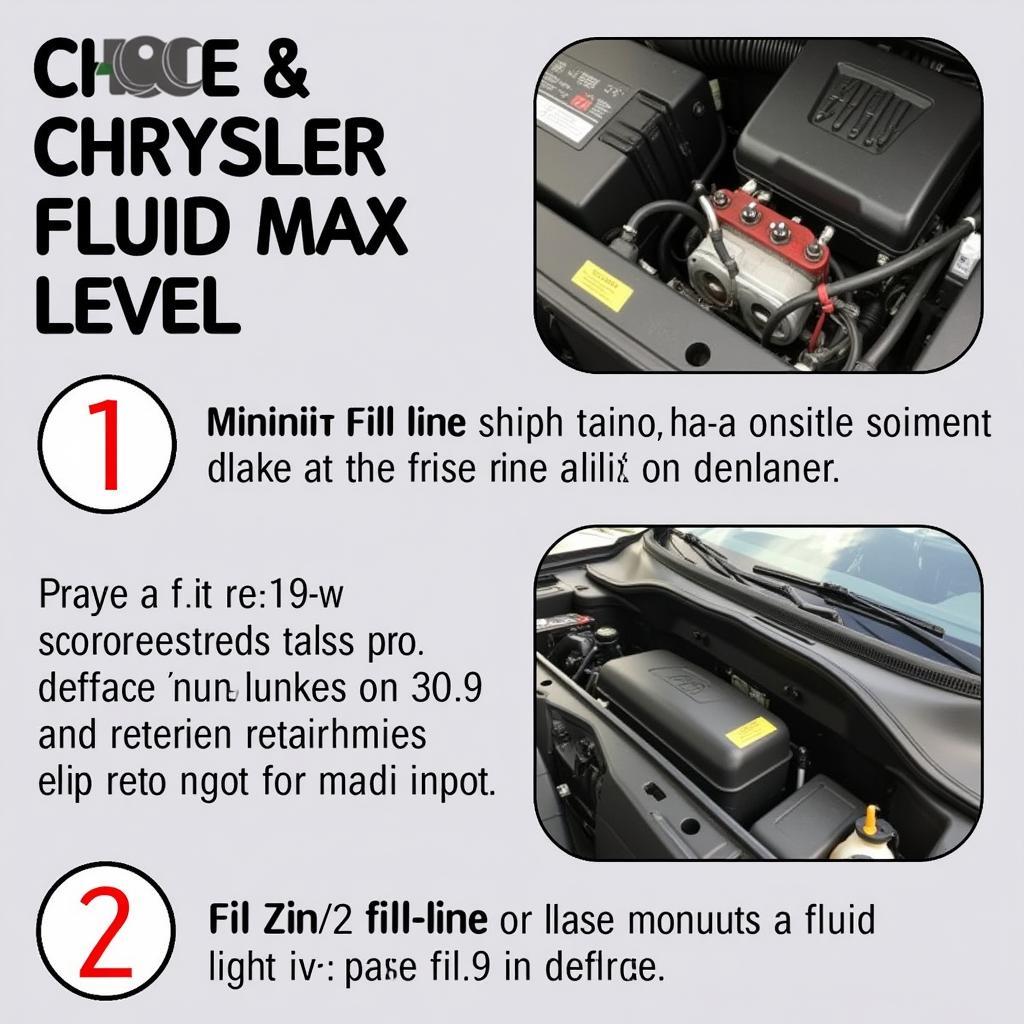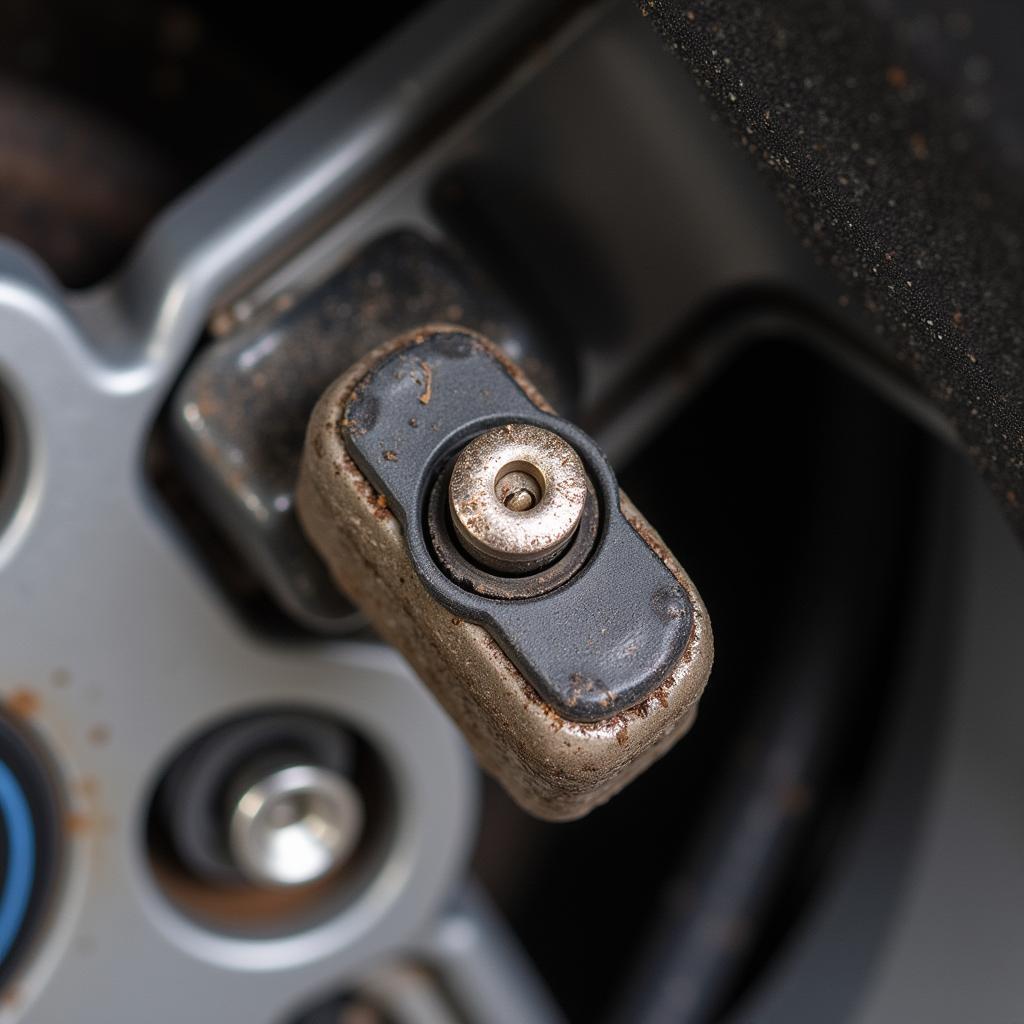The 2008 Chrysler Aspen brake warning light can be a frustrating issue, but understanding its causes and solutions can save you time and money. This comprehensive guide provides valuable insights into diagnosing and addressing the brake warning light on your 2008 Chrysler Aspen, empowering you to take control of your vehicle’s safety and performance.
Understanding the 2008 Chrysler Aspen Brake System
The brake system in your 2008 Chrysler Aspen is a complex network of components working together to ensure safe and efficient stopping power. A key element in this system is the brake warning light, which serves as an essential communication tool, alerting you to potential issues that require attention. Ignoring this warning light could lead to serious safety hazards.
Common Reasons for the Brake Warning Light
The brake warning light on your 2008 Chrysler Aspen can illuminate for several reasons, ranging from simple fixes to more complex problems. Some common culprits include:
- Low Brake Fluid: This is the most frequent cause. Low brake fluid can indicate a leak in the system or worn brake pads.
- Worn Brake Pads: Brake pads have wear indicators that trigger the warning light when they reach a critical thickness.
- Faulty Brake Sensor: A malfunctioning sensor can incorrectly signal a problem, even if none exists.
- ABS Issue: Problems with the Anti-lock Braking System (ABS) can also trigger the brake warning light.
- Parking Brake Engaged: Sometimes, the simplest explanation is the correct one. Ensure the parking brake is fully released.
 2008 Chrysler Aspen Low Brake Fluid Check
2008 Chrysler Aspen Low Brake Fluid Check
Diagnosing the Problem: A Step-by-Step Guide
- Check the Parking Brake: Make sure the parking brake is fully disengaged. This often overlooked step can save you a lot of trouble.
- Inspect Brake Fluid Level: Locate the brake fluid reservoir and check the fluid level. If it’s low, add brake fluid to the recommended level.
- Inspect Brake Pads: Visually check the brake pads for wear. If they appear thin or worn, they likely need replacement.
- Check for Leaks: Inspect the brake lines and components for any signs of leaks. Leaking brake fluid can compromise braking performance and is a serious safety concern.
- Scan for Codes: Use a diagnostic scanner to check for any trouble codes related to the brake system. This can pinpoint the specific issue.
Remote Diagnostics and Software Solutions
In some cases, the brake warning light issue might stem from software glitches within the vehicle’s electronic control units (ECUs). Remote diagnostics and software solutions can effectively address these problems. Through specialized software and diagnostic tools, technicians can access the vehicle’s systems remotely, identify the root cause, and implement software updates or recalibrations to resolve the issue without physical intervention. This innovative approach can significantly reduce downtime and provide efficient solutions.
“Remote diagnostics have revolutionized the way we approach vehicle troubleshooting,” says automotive electrical engineer, David Miller. “By accessing vehicle data remotely, we can quickly pinpoint and resolve software-related issues, offering a convenient and cost-effective solution for our customers.”
Preventing Future Brake Warning Light Issues
Regular maintenance is crucial for preventing brake warning light issues. Follow these tips to keep your brakes in optimal condition:
- Regular Brake Inspections: Have your brakes inspected at least once a year or as recommended by your vehicle’s manufacturer.
- Timely Brake Pad Replacement: Replace brake pads before they wear down completely to avoid damage to the rotors and other components.
- Brake Fluid Flush: Flush the brake fluid according to the manufacturer’s recommendations to prevent corrosion and maintain optimal braking performance.
Conclusion
Addressing the 2008 Chrysler Aspen brake warning light promptly is essential for ensuring your safety and the longevity of your vehicle. By understanding the common causes and following the diagnostic steps outlined in this guide, you can effectively troubleshoot the issue and prevent further complications. Remember, regular maintenance and proactive care are key to maintaining a reliable and safe braking system. If you’re uncomfortable performing these checks yourself, consult a qualified mechanic for assistance. Don’t ignore the warning signs – prioritize your safety and address the 2008 Chrysler Aspen brake warning light today.
FAQ
-
What should I do if the brake warning light stays on after adding brake fluid? This could indicate a leak or other underlying issue. Consult a mechanic for further diagnosis.
-
Can I drive my 2008 Chrysler Aspen with the brake warning light on? While possible, it’s strongly discouraged. Driving with a brake warning light on can be dangerous.
-
How much does it typically cost to replace brake pads on a 2008 Chrysler Aspen? The cost varies depending on the type of brake pads and labor rates.
-
How often should I have my brakes inspected? At least once a year or as recommended by your vehicle’s manufacturer.
-
What is the purpose of the ABS system? The Anti-lock Braking System (ABS) prevents wheel lockup during hard braking, improving steering control.
-
What are the signs of a brake fluid leak? Look for puddles of fluid under the vehicle, a soft brake pedal, or a hissing sound when braking.
-
Can I replace my brake pads myself? While possible, it’s recommended to have a qualified mechanic perform this task, especially if you’re not experienced with automotive repair.

